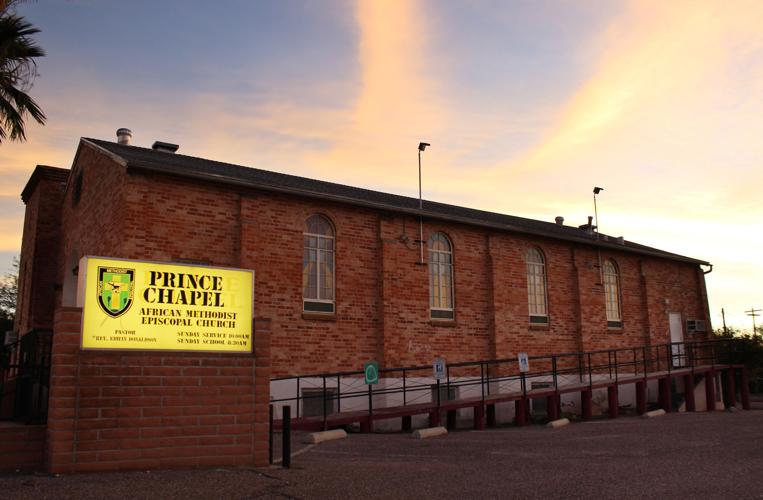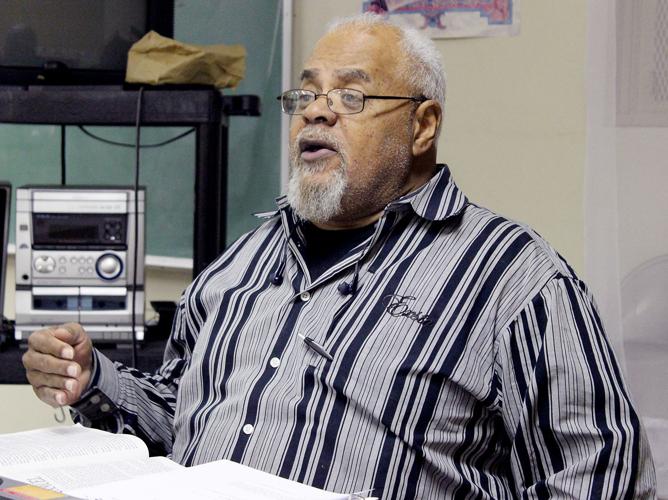Prince Chapel African Methodist Episcopal Church owes its 110 years of longevity to warm welcomers.
At least, that’s the opinion of Joann Thompson, a leader at the church involved in organizing the festivities for its anniversary on Sunday, Nov. 22.
Thompson remembers her own first visit to the church in 1980. She picked Prince Chapel because of her background with AME churches in Bermuda. Prince Chapel is the only official AME church in Tucson, though a former member of the church recently started a “mission church,” which is not yet part of the denomination, Thompson says.
Despite her familiarity with AME traditions, Thompson remembers standing on the front steps on that first Sunday, hesitant to enter.
Her deliberations where cut short when a man burst through the doors.
“Well, welcome to Prince Chapel,” he said. “Come on in and be part of Sunday school!”
The welcome extended further during the worship service when a member of the choir caught her eye.
“She gave me such a big smile, it’s like, I’ve come home ... ,” Thompson said. “That first Sunday, I knew it. I knew this was home.”
Founded in 1905, Prince Chapel got its start in the kitchen of the Rev. Ratcliff Hughes. The church moved into its own building in 1912 at the corner of West 17th Street and South Convent Avenue and built its current building at 602 S. Stone Ave. in 1941, according to the church.
The second-oldest black church in Tucson, Prince Chapel opened its doors at a time when there were about 200 blacks in the city. Since then, the size of the church’s population has ebbed and flowed.
In 2000, the Star reported that the church’s membership of 250 had it scrambling for a larger space.
Now, about 150 names are listed on the membership roster, said the Rev. Edwin R. Donaldson Jr., but the congregation still hopes to move or renovate.
“This building is old ... ,” Donaldson, the pastor, says. The church office operates out of a portable building in the parking lot. “We want to grow, and we want a better facility.”
Activity pulses through the church all week. On Wednesdays, a group meets for prayer and Bible study. On Thursdays, church members get their sweat on at an exercise class.
The choir does gospel music, and church staff say they might perform the national anthem at an upcoming University of Arizona basketball game or football game next season. The church also just started a youth choir.
“We’re trying to get out of (going to) church just on Sunday,” says Pamela Busch, a member of the church’s trustee board and financial committee, emphasizing church activities that happen throughout the week. “If you don’t, you will die out.”
The churchgoers range in age from 2 weeks to 96 years old, Donaldson says. But the congregation clusters between 30 and 60 years of age, Thompson adds. Five clergy, including Donaldson, fill the pulpit on Sundays.
“It’s always been a place you can rely on for help,” says Busch, who has been attending since the 1990s. “And I don’t mean financial, I mean spiritual help, emotional help. It’s always there for you. And when I say church, I’m talking about the people.”
Busch, like Thompson, came to Prince Chapel because of her own background with the African Methodist Episcopal denomination.
“African, because we did come from African descent; Methodist is the doctrine; Episcopal is the form of government because we are bishop-led,” Thompson says.
The denomination split from the Methodist church and formed a new congregation in the late 1700s not for doctrinal reasons, but because of racial mistreatment, according to Donaldson and the denomination’s church history webpage.
Donaldson came to the church in March from Wyoming, where he pastored another AME congregation. The denomination means continuity among its churches.
“You want people to feel at home, no matter where they come from,” Thompson says.
Even in the funeral service televised after nine churchgoers were killed this summer at Emanuel African Methodist Episcopal Church in Charleston, South Carolina, Donaldson recognized “some of the things we do every Sunday.”
After that massacre, Thompson took members of Emanuel AME Church a flag presented to Prince Chapel by Tucson’s Flags for the Flagless, the Star reported in July.
“I took the flag to Charleston, South Carolina to let them know we share and know what they’re going through because of the shooting of Gabby,” Thompson says, referring to the 2011 Tucson shooting which killed six and wounded 13, including former U.S. Rep Gabrielle Giffords.
Solidarity with other congregations and interfaith work is a big part of the Prince Chapel identity, whether that means feeding the homeless, visiting Jewish synagogues or raising awareness about AIDS with the city’s other black churches.
“While we are African Methodist Episcopal, we don’t stress just the African or black part of it,” Donaldson says. “We stress, as God did, all people, all children and all races.”
On Nov. 10, the Pima County Board of Supervisors adopted a proclamation recognizing the upcoming anniversary of the historic church and its consistent “message of Faith, Grace and Praise” in the downtown area.
Still, the church has not been untouched by time — aging facilities, leadership changes and church dissension.
“Prince Chapel always has given us such a warmth, and like any other church, we have had to battle the economy and things like that,” Thompson says. “But I believe someone once said, ‘God, as long as you can find one faithful person, please bless this church,’ so I think God has found at least one faithful person over the years and has blessed us for 110 years.”





